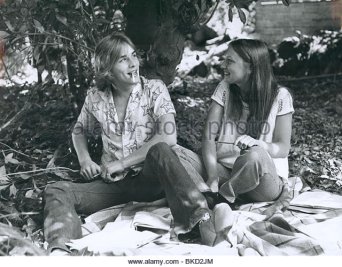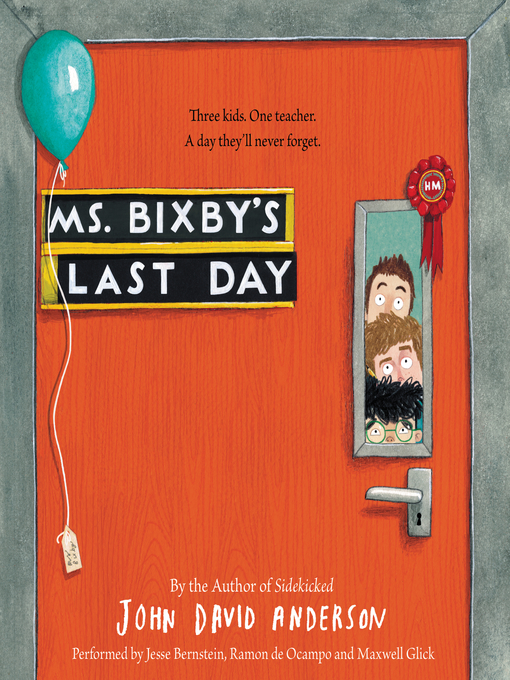 Robert H. Rimmer’s 1966 novel, The Harrad Experiment, was a moderate success when first published in hardcover. One year later, Bantam Books published the paperback version, and the book exploded selling over 300,000 copies in one month, eventually selling over three million. Rimmer, who died in in 2001, wrote close to twenty books, both fiction and non-fiction, most, if not all, focusing on unconventional, free love relationships outside the norm of monogamy. The Harrad Experiment was his most successful work spawning a second related nonfiction book called The Harrad Letters to Robert H. Rimmer.
Robert H. Rimmer’s 1966 novel, The Harrad Experiment, was a moderate success when first published in hardcover. One year later, Bantam Books published the paperback version, and the book exploded selling over 300,000 copies in one month, eventually selling over three million. Rimmer, who died in in 2001, wrote close to twenty books, both fiction and non-fiction, most, if not all, focusing on unconventional, free love relationships outside the norm of monogamy. The Harrad Experiment was his most successful work spawning a second related nonfiction book called The Harrad Letters to Robert H. Rimmer.
 The book and the film are set at Harrad, a privately funded and liberal college where carefully selected students are paired off with seemingly incompatible partners and are forced to confront their sexuality and hang-ups. The two main couples are Stanley (Don Johnson), good looking, hip and sex-crazed, and Sheila, Laurie Walters of Eight is Enough fame, a cute, but timid girl who seems like a fish out of water. The other main couple is the insecure Harry (Bruno Kirby Jr.) and the sexually more open, and experienced, Beth (Victoria Thompson). The school’s run by Professor Philip Tenhausen (James Whitmore) and his wife Margaret (Tippi Hedren) whose philosophy is that students need to free themselves from society’s iron shackles. The young generation needs to think and act for themselves if society is to keep advancing. The school forces the students to face their jealousies. No one is compelled to have a sexual relationship with their partner, but it’s encouraged. Students are told they do not have to lose weight though most in the cast are in amazingly good shape. The students should consider themselves open minded thinkers for even attending the school freeing themselves of society’s restrictions.
The book and the film are set at Harrad, a privately funded and liberal college where carefully selected students are paired off with seemingly incompatible partners and are forced to confront their sexuality and hang-ups. The two main couples are Stanley (Don Johnson), good looking, hip and sex-crazed, and Sheila, Laurie Walters of Eight is Enough fame, a cute, but timid girl who seems like a fish out of water. The other main couple is the insecure Harry (Bruno Kirby Jr.) and the sexually more open, and experienced, Beth (Victoria Thompson). The school’s run by Professor Philip Tenhausen (James Whitmore) and his wife Margaret (Tippi Hedren) whose philosophy is that students need to free themselves from society’s iron shackles. The young generation needs to think and act for themselves if society is to keep advancing. The school forces the students to face their jealousies. No one is compelled to have a sexual relationship with their partner, but it’s encouraged. Students are told they do not have to lose weight though most in the cast are in amazingly good shape. The students should consider themselves open minded thinkers for even attending the school freeing themselves of society’s restrictions.
 If this is starting to sound like a lot of sixties free love mumble jumble, consider that back in the 1950’s Bennington College in Vermont, then an all-girls school was a socially progressive school where the students experienced both personal freedom as well as intellectual freedom. At a time when there were “house mothers” scrutinizing dorms, making sure curfews and visitor rules were strictly enforced, the female students at Bennington were encouraged to experience life. According to Ruth Franklin in her excellent biography of author Shirley Jackson (The Lottery, The Haunting of Hill House), there were only three rules: “Silence had to be maintained in the library at all times and elsewhere on campus after ten.p.m.; no cars could be driven on the road by the student houses after ten p.m., and a student who planned to be off campus after eleven p.m. had to fill out a slip saying where she could be reached. Franklin further explains how just before Parents Weekend a notification would be sent to all students informing them to be sure to remove liquor bottles from view.
If this is starting to sound like a lot of sixties free love mumble jumble, consider that back in the 1950’s Bennington College in Vermont, then an all-girls school was a socially progressive school where the students experienced both personal freedom as well as intellectual freedom. At a time when there were “house mothers” scrutinizing dorms, making sure curfews and visitor rules were strictly enforced, the female students at Bennington were encouraged to experience life. According to Ruth Franklin in her excellent biography of author Shirley Jackson (The Lottery, The Haunting of Hill House), there were only three rules: “Silence had to be maintained in the library at all times and elsewhere on campus after ten.p.m.; no cars could be driven on the road by the student houses after ten p.m., and a student who planned to be off campus after eleven p.m. had to fill out a slip saying where she could be reached. Franklin further explains how just before Parents Weekend a notification would be sent to all students informing them to be sure to remove liquor bottles from view.
There’s a lot of abstract, metaphysical talk about freeing your mind which results in, what seemed to me, like a lot of superficial conceptual group exercises. Toward the end of the film, there’s a class where everyone is nude sitting out in an open field, on campus. It involves looking into the eyes of the person sitting next to you and saying the word “Zoom!” That person catches the word and turns toward the person next to them passing on the catch phrase “Zoom!” From the “Zoom” goes around and around. We also have nude yoga classes as well as Tippi Hedren seducing student Don Johnson on the college lawn, and yes there is some tree hugging. It’s all done with a bad soundtrack and a lot of questionable acting.
The Harrad Experiment, directed by Ted Post, is not essential viewing, but it is a small peek back in time when society’s shackles were just beginning to loosen, and people were experimenting in different lifestyles
One year later, a sequel, Harrad Summer (1974), was made with Laurie Walters and Victoria Thompson recreating their roles. Don Johnson and Bruno Kirby wisely bowed out.
Advertisements Share this:
- More





